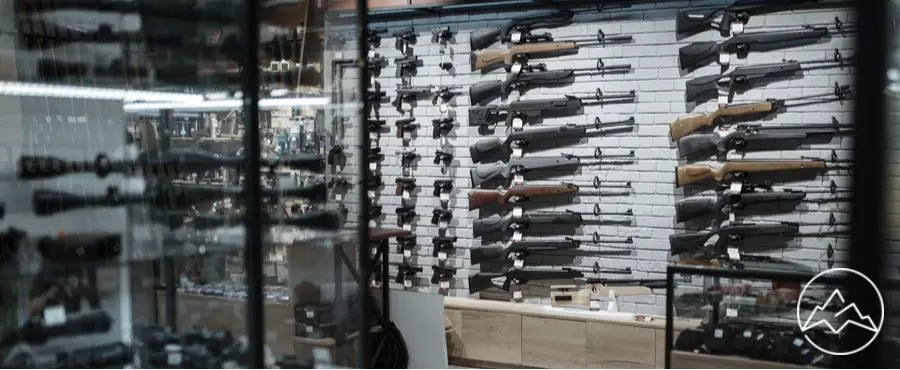The word “ballistics” is a word we hear often but don’t actually consider its meaning. Referring to the science of projectiles, ballistics can apply to a stick you’ve thrown through the air or an intercontinental warhead carrying a hydrogen bomb.
A ballistics chart is an instrumental piece of data for any gun owner. If you want to discharge your firearm safely and more effectively, then you should familiarize yourself with the ballistics chart specific to your firearm.Below we’ll cover the key features of ballistics charts to help you better understand your firearm.
Internal ballistics
Before we get to how a bullet actually travels through the air, it is important to note that the ballistics of a firearm begins in the barrel when the gun discharges. Let’s take a Winchester ballistics chart, specifically the .222, as an example.
A Winchester .222 ballistics chart has varied options for ammunition weight, from 40 to 60 grains. This refers to the amount of powder within each cartridge. The more powder, the greater the pressure within the barrel when the firearm discharges.
Higher pressure in the barrel means a higher exit velocity. Exit velocity is the speed the bullet is traveling immediately as it leaves the barrel. Since this calculation depends on the type of round and the length of the barrel, it is critical to understand ammunition ballistics and the specs of your firearm.A faster-moving projectile, therefore, will have a completely different trajectory than one that exits the barrel at a lower speed. As well, the shape and type of round you are discharging, such as hollow point versus soft point, will change the trajectory of the projectile.
Headed to the shooting range? Be sure to check out our top picks for gun range bags.
External ballistics
A rifle ballistics chart outlines how a given round will behave upon discharge from a specific rifle. However, these charts have different numbers and calculations that may seem confusing at a glance. Below is an outline and explanation for each category of a ballistics chart:- Velocity – probably the most easily understood spec, this measures the speed of a bullet at certain distances. Measured in feet per second, the speed of a bullet depends on its mass. The greater the mass, the slower the projectile will travel.
- Energy – this is a vague term that is perhaps the most important stat on a ballistics chart. The energy of a projectile refers to the amount of energy delivered to a target by a bullet. This factor is affected by drag, also known as retardation, the projectile encounters as it moves through the air.
- Short Range Trajectory – this part of the ballistics chart indicates how high or low you should sight your firearm depending on the distance to the target. Short range trajectories assume you have sighted your gun to zero at a nearer distance, such as 150 meters.
- Long Range Trajectory – trajectories for targets at further distances are set to zero at a greater distance, such as 200 meters, compared to the short range trajectory.
External ballistics explained
Now that you have a basic understanding of what and why certain information is on a ballistics chart let’s break down further what some of the more complicated terms, such as trajectory and energy, actually mean when firing a weapon.
Kinetic energy
Energy is, in part, the speed of the projectile as it leaves the firearm. However, this speed depends on the length of the barrel, the size of the cartridge, and the shape.
The ideal shape for a cartridge is much like those you see today, a parabolic-shaped nose cone with a long, skinny body. Naturally, jamming more powder into a cartridge would increase the energy of a weapon. However, the barrel of a firearm can only withstand certain pressure. Too much powder would result in excess gas in the barrel, and cause injury to the shooter.
Another factor, mentioned above, is drag, or retardation. The faster the bullet goes, the more drag. If you look at a ballistics chart for the Winchester .222, it lists rounds from 40 to 60 grains. A 60-grain round has lower energy than a 55-grain round since the round with greater mass is more affected by drag.
Trajectory
Measuring the trajectory of a projectile is tricky. The sight of a firearm is typically two inches above the barrel and angled downward, so that the line of sight (LOS) of the shooter meets, at some pre-calibrated point, the path of the projectile.
Anyone with a sighted rifle will calibrate their site depending on location and target type. If you want to shoot small game at short distances, then you will calibrate your sight to match the zero on the short-range trajectory ballistics chart for your weapon. Using the chart, you can then raise or lower your gain as specified in the chart for the type of ammunition you are using.
For a longer range trajectory, you will adjust your sight to the distance indicated in the long-range section of your firearm’s ballistics chart. Adjust your aim accordingly depending on the distance to your target, as per the long-range trajectory section on the ballistics chart.




40-60 grain is the weight of the projectile not the amount of propellant….